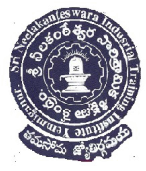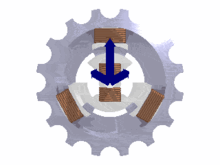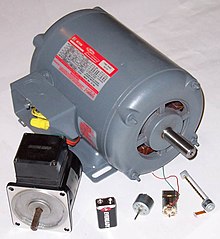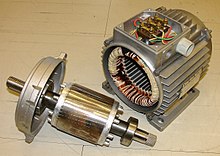Electric Motor
An electric motor is an electric machine that converts electrical energy into mechanical energy. The reverse conversion of mechanical energy into electrical energy is done by an electric generator.
In normal motoring mode, most electric motors operate through the interaction between an electric motor's magnetic field and winding currents to generate force within the motor. In certain applications, such as in the transportation industry with traction motors, electric motors can operate in both motoring and generating or braking modes to also produce electrical energy from mechanical energy.
Found in applications as diverse as industrial fans, blowers and pumps, machine tools, household appliances, power tools, and disk drives, electric motors can be powered by direct current (DC) sources, such as from batteries, motor vehicles or rectifiers, or by alternating current (AC) sources, such as from the power grid, inverters or generators. Small motors may be found in electric watches. General-purpose motors with highly standardized dimensions and characteristics provide convenient mechanical power for industrial use. The largest of electric motors are used for ship propulsion, pipeline compression and pumped-storage applications with ratings reaching 100 megawatts. Electric motors may be classified by electric power source type, internal construction, application, type of motion output, and so on.
Devices such as magnetic solenoids and loudspeakers that convert electricity into motion but do not generate usable mechanical power are respectively referred to as actuators and transducers. Electric motors are used to produce linear force or torque (rotary)
Motor construction
Rotor
In an electric motor the moving part is the rotor which turns the shaft to deliver the mechanical power. The rotor usually has conductors laid into it which carry currents that interact with the magnetic field of the stator to generate the forces that turn the shaft. However, some rotors carry permanent magnets, and the stator holds the conductors. Devices such as magnetic solenoids and loudspeakers that convert electricity into motion but do not generate usable mechanical power are respectively referred to as actuators and transducers. Electric motors are used to produce linear force or torque (rotary).
Stator
The stationary part is the stator, usually has either windings or permanent magnets. The stator is the stationary part of the motor’s electromagnetic circuit. The stator core is made up of many thin metal sheets, called laminations. Laminations are used to reduce energy losses that would result if a solid core were used.
Air gap
In between the rotor and stator is the air gap. The air gap has important effects, and is generally as small as possible, as a large gap has a strong negative effect on the performance of an electric motor.
Windings
Windings are wires that are laid in coils, usually wrapped around a laminated soft iron magnetic core so as to form magnetic poles when energized with current.
Electric machines come in two basic magnet field pole configurations: salient-pole machine and nonsalient-pole machine. In the salient-pole machine the pole's magnetic field is produced by a winding wound around the pole below the pole face. In the nonsalient-pole, or distributed field, or round-rotor, machine, the winding is distributed in pole face slots.[51] A shaded-pole motor has a winding around part of the pole that delays the phase of the magnetic field for that pole.
Some motors have conductors which consist of thicker metal, such as bars or sheets of metal, usually copper, although sometimes aluminum is used. These are usually powered by electromagnetic induction.
A commutator is a mechanism used to switch the input of certain AC and DC machines consisting of slip ring segments insulated from each other and from the electric motor's shaft. The motor's armature current is supplied through the stationary brushes in contact with the revolving commutator, which causes required current reversal and applies power to the machine in an optimal manner as the rotor rotates from pole to pole.[52][53] In absence of such current reversal, the motor would brake to a stop. In light of significant advances in the past few decades due to improved technologies in electronic controller, sensorless control, induction motor, and permanent magnet motor fields, electromechanically commutated motors are increasingly being displaced by externally commutated induction and permanent magnet motors.








